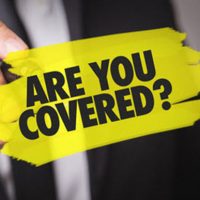Common Exclusions To Look For In Your Homeowners Insurance Policy

Your homeowner’s insurance coverage prevents you from being held personally liable for injuries that happen on your property, such as slips or falls and dog bites. It also prevents you from paying out of pocket when adverse events cause property damages. When purchasing insurance coverage and before filing a property damage claim, review the terms of your coverage and any policy exclusions.
What Type of Property Damage Coverage Do You Have?
The Insurance Information Institute (III) reports that property damage claims comprise close to 98 percent of payouts on homeowner’s insurance policies. The most commonly filed types of claims concern damages due to wind, hail, fire, lightning strikes, water damage, and theft. There are three types of policies offering differing levels of coverage, which will dictate whether you are entitled to compensation in a claim:
- An HO-1 policy: This is the most inexpensive type of coverage. It is extremely limited and likely not to cover basic damages homeowners often suffer. As a result, it is not sold in many states.
- An HO-2 policy: This is one of the more common types of coverage and protects you against the above and other types of damages, such as due to falling objects or surging electrical currents.
- An HO-3 policy: This goes a step further and is often referred to as a ‘special form’ policy, It covers everything, but certain types of perils, which are listed in your policy documents.
While HO-2 or HO-3 coverage is obviously preferable and provides greater protections, these policies will still contain certain types of exclusions. These are damages that are not covered and are generally referenced in your summary of benefits.
Check Your Property Damage Insurance Policy For These Common Exclusions
When purchasing property owner’s insurance or getting ready to file a claim, it is important to review all items listed under the Exclusion subheading in your policy documents. This will detail certain situations and types of damages for which you are not covered. Insure warns that the following are the most common types of exclusions in property damage insurance policies:
- Damages caused by earth movements, such as earthquakes, mudslides, and sinkholes;
- Damages due to water damage, such as in cases of flooding or sewer line backups;
- Damages caused by neglect or normal wear and tear on the property;
- Damages due to government actions, such as when work performed as part of local or state initiatives cause damage to your home or other structures;
- Damages caused in the course of running a home-based business;
- Damages due to ordinance or law, such as repairs needed to bring your home up to current building codes after a loss.
Let Us Help You Today
Insurers use policy exclusions as a means of either denying or delaying payment on your claim. To ensure your rights are protected, discuss your case with our experienced Daytona Beach property damage attorneys. Call or contact Bundza & Rodriguez online and request a consultation today.
Resource:
iii.org/fact-statistic/facts-statistics-homeowners-and-renters-insurance
